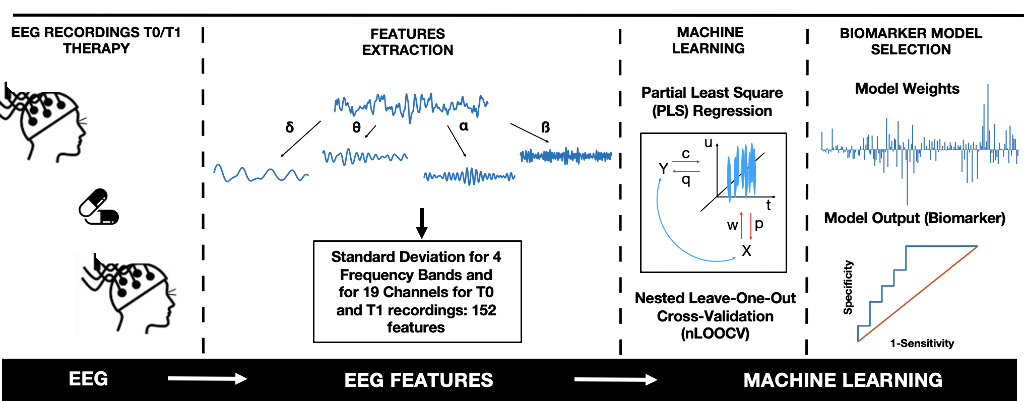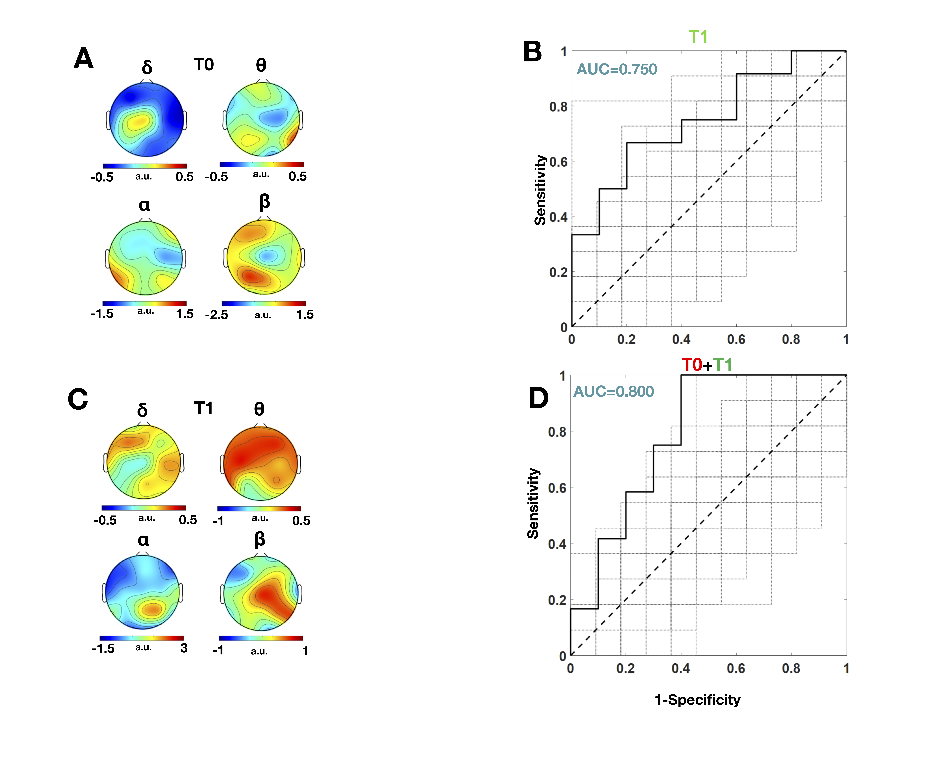Jacopo Lanzone (Italy)
Università Tor vergata Department of Systems Medicine, NeuroscienceAuthor Of 2 Presentations
USE OF MACHINE LEARNING FOR PREDICTING LEVETIRACETAM TREATMENT OUTCOME IN TEMPORAL LOBE EPILEPSY: A PHARMACO-EEG STUDY.
- Lorenzo Ricci (Italy)
Abstract
Background and Aims:
Temporal Lobe Epilepsy (TLE) is a common cause of drug-resistant epilepsy. For these patients, the electroencephalogram (EEG) is a pivotal diagnostic neurophysiological technique. In this study, we aim to determine the predictive power for seizure-freedom of 19-channels EEG, measured both before and after three months the initiation of one of the most used anti-seizure medication (ASM), levetiracetam (LEV), in a population of newly diagnosed TLE people using a machine-learning approach.
Methods:
Twenty-three individuals with TLE were examined. Clinical outcome was dichotomized into seizure-free (SF) and non-seizure-free (NSF) after two years of LEV. EEG effective power in different frequency bands was compared using baseline EEG (T0) and the EEG after three months of LEV therapy (T1) between SF and NSF patients. Partial Least Square (PLS) analysis was used to test and validate the prediction of the model for clinical outcome.

Results:
A total of 152 features were extracted from the EEG recordings calculating the effective power for each channel and for four frequency bands (delta: 1-4 Hz, theta: 5-7 Hz, alpha: 8-12 Hz and beta: 13-29 Hz). When considering only the features calculated at T1, an AUC = 0.750 was obtained. When employing both T0 and T1 features, an AUC = 0.800 was obtained.

Conclusions:
This study provides a proof-of-concept pipeline for predicting the clinical response to ASMs in people with epilepsy. Future studies employing larger data sets may benefit from the pipeline proposed in this study in order to develop a model that can match each patient to the most effective anti-seizure treatment.
MAJOR DETERMINANTS OF QUALITY OF LIFE IN ADULT PATIENTS WITH EPILEPSY
- Mario Tombini (Italy)
Abstract
Background and Aims:
To assess quality of life (QoL) in adult people with epilepsy (PWE) and identify the main factors affecting it.
Methods:
We enrolled consecutively 122 PWE. They were interviewed for a careful collection of demographic and clinical data. Patients completed dedicated questionnaires for the assessment of the quality of life (Quality of Life in Epilepsy Scale-31)(Q31) as well as psychosocial features: depressive symptoms (DS)(Beck Depression Inventory-II/BDI-II), difficulties of emotion regulation (Difficulties of Emotion Regulation Scale/DERS), stigma related to epilepsy (Stigma Scale of Epilepsy/SSE and Jacoby's Stigma Scale/JSS). The results of Q31 and their subscales were correlated with clinical details of PWE, as well as the other scores. A stepwise multiple regression analysis was applied to identify the main factors affecting QoL.
Results:
Quality of life is inversely correlated mostly with psychosocial features, as DS, emotion dysregulation and stigma perception, as well as with epilepsy-related factors, as the seizure frequency and number of antiseizure medications (ASMs). The combination of DS, perceived stigma and number of ASMs best explained the QoL. Worse features of QoL were detected in females and in patients with age of epilepsy onset in adulthood.
Conclusions:
Quality of life in adult PWE is predominantly affected by psychosocial factors more than epilepsy-related ones. These findings suggest that effective epilepsy management requires more than seizure control, early detection of psychological dysfunction and tailored interventions to improve the QoL should be considered.
